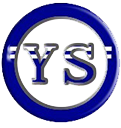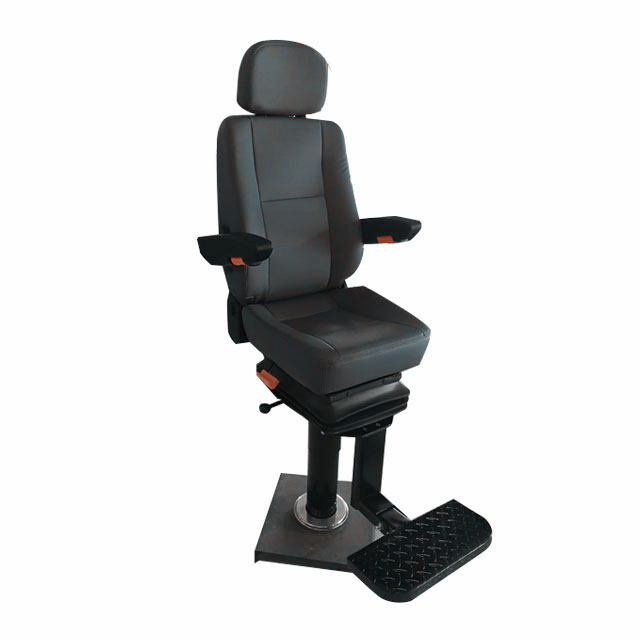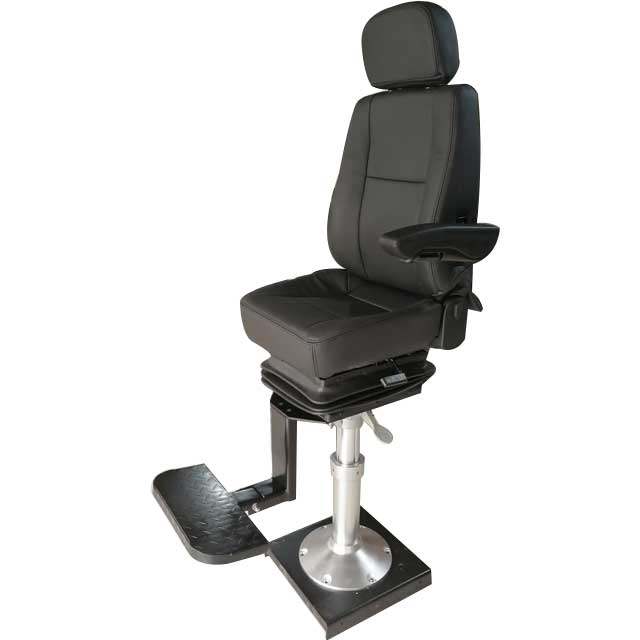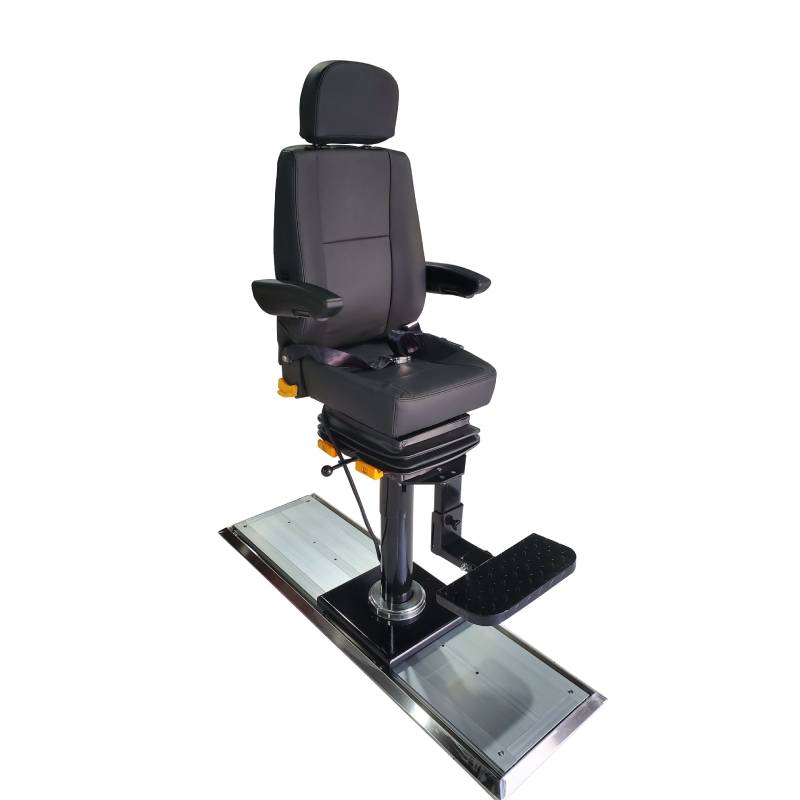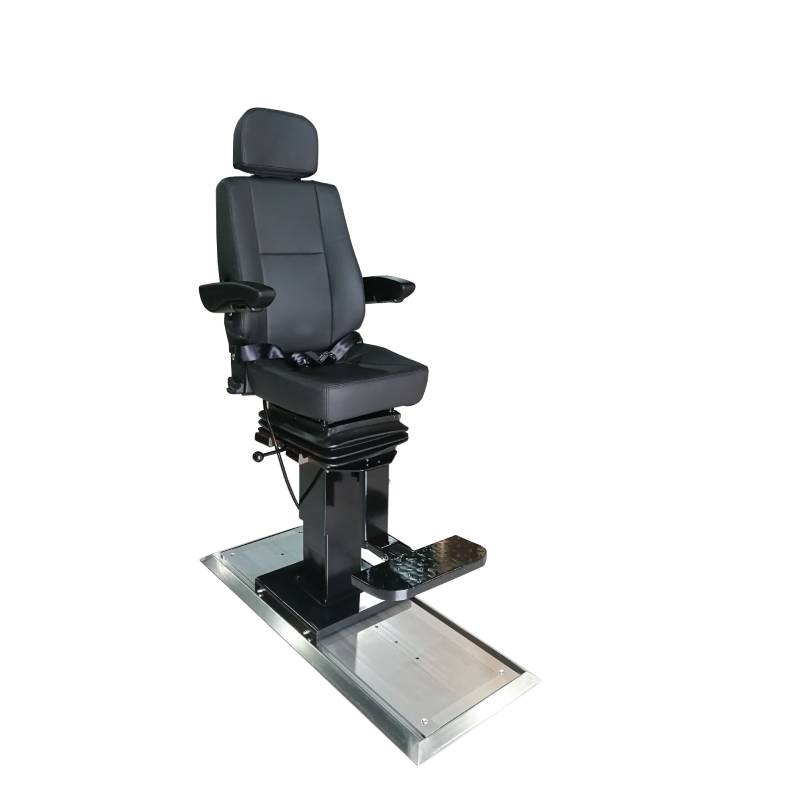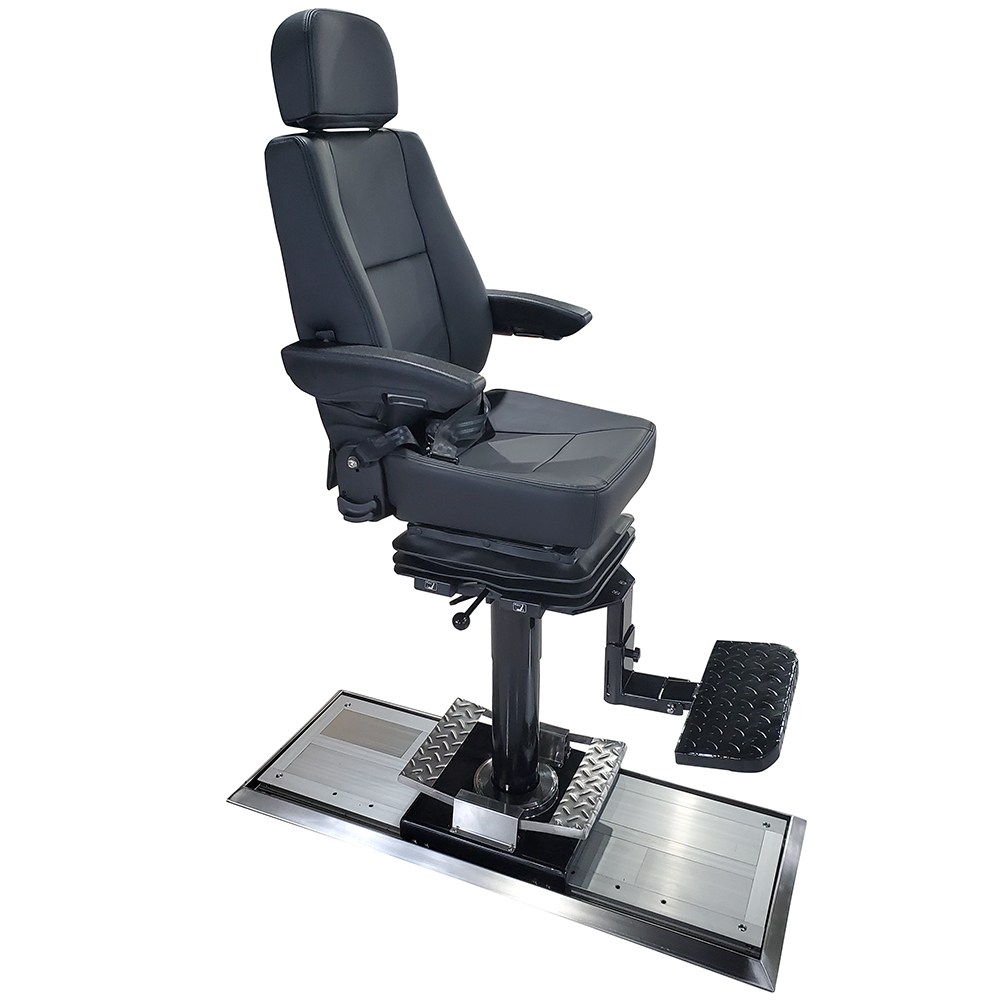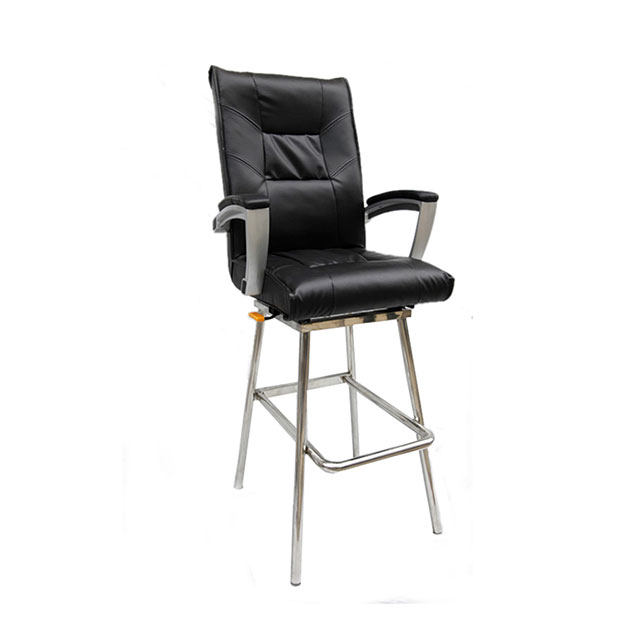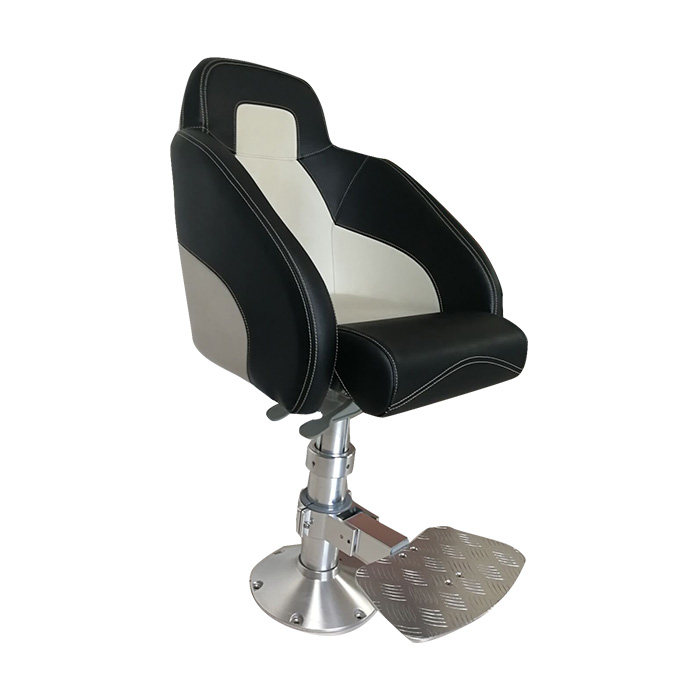Key Safety Features and Certifications in Marine Pilot Chairs
Marine pilot chairs serve as the command seats in bridges on ships, supplying the captain or helmsman comfort, control, and visibility over long navigation times. Because of the vital role of these chairs in vessel operations, making sure their safety, longevity, and ergonomic functionality is essential. Therefore, marine pilot chairs must be subject to strict safety features and must comply with recognized international certifications. This article focus on the important safety features and certifications that define the high-quality marine pilot chairs.
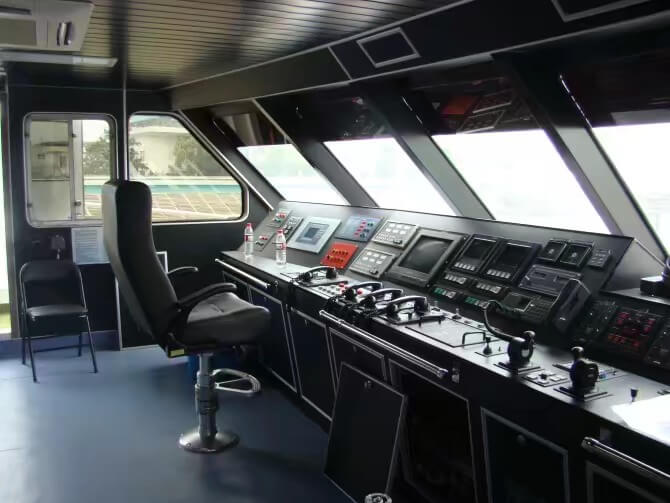
Table of Contents
Importance of Safety in Marine Pilot Chairs
In marine environments, rough seas, swells and long periods of work require chairs that can stand up to constant stress and provide an ergonomically designed support system to help reduce fatigue. An issue with the integrity of the chair or performance can hinder operator performance, and in extreme instances, result in accidents or even navigational errors. So, safety is a factor not just in structural integrity, but also the design, material selection, and the functional flexibility of the captain’s chair.
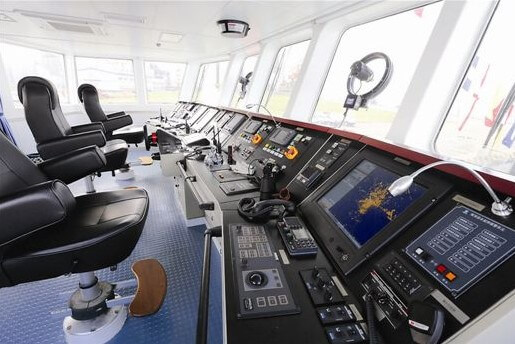
Key Safety Features in Marine Pilot Chairs
From the materials to functionality, each aspect of the design and construction of marine pilot chairs is aimed at protecting the user in the harsh maritime environment.
1. Durable Structural Framework for Stability
One of the most crucial aspects of safety in the marine captain’s chair is its durable structural stability. The chairs are constructed using marine-grade stainless steel or anodized aluminum, which provides the highest resistance to corrosion due to saltwater and outstanding capacity to bear loads. A solid frame will ensure that the chair is stable and secure in turbulent sea conditions or abrupt shifts in ship.
2. Integrated Shock Absorption Systems
To safeguard the user from constant waves and vibrations, Many marine pilot chairs have shock-absorbing mechanisms. They could be spring-loaded, pneumatic dampers or pads that reduce vibration, which minimize physical strain to the human body. Suspension shock absorbing pilot chair is not just beneficial for operator safety, but also decreases fatigue over long periods of navigation.

3. Ergonomic Design for Operator Health
Ergonomics is an essential element of the design of captain’s seats for marine use. Features like an adjustable backrest, lumbar support armrests, and headrests assist users maintain a good posture. If ergonomics aren’t taken into consideration this can result in injuries or chronic discomfort, which can pose a serious danger to safety during crucial operations. Good ergonomics will ensure that workers remain in a state of alertness and comfort that is vital to ensure safe navigation.
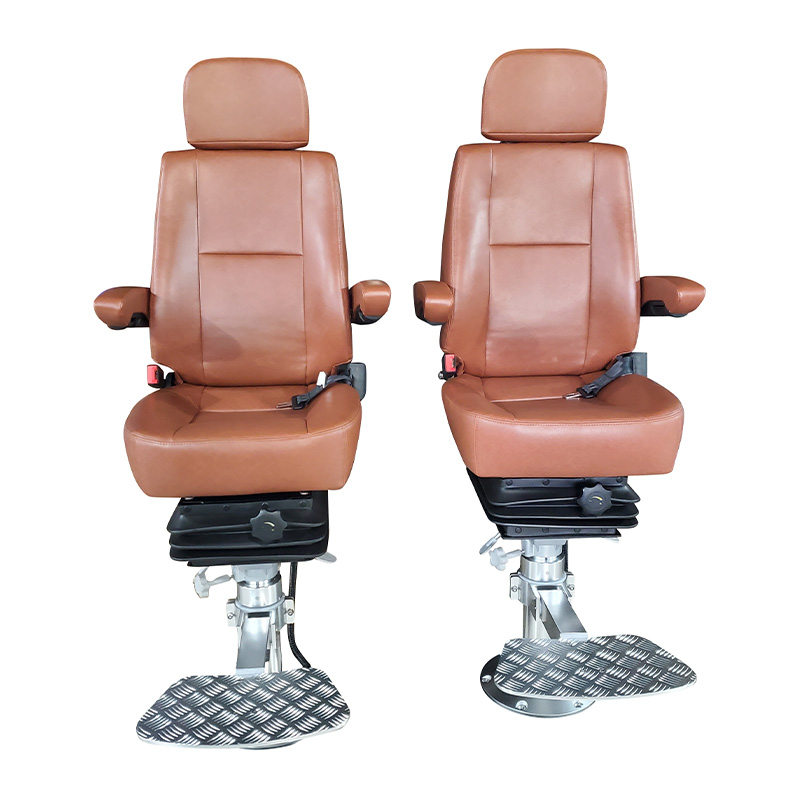
4. Swivel and Locking Mechanisms
Marine pilot chairs usually made to swivel, which allows users to reach different options or displays on an instrument console with no stressing. But, this function should be complemented with a safe locking system. The locking mechanism puts the chair in an upright position when required to prevent unexpected movement during rough sea conditions, and enhancing the safety of critical maneuvers.
5. Fire-Resistant and Anti-Slip Upholstery
The safety factor extends to material used for the chairs’ seating surfaces. The upholstery in the marine pilot chairs is usually constructed from fire-resistant materials that are compliant with the regulations for marine fire safety. In addition, anti-slip materials aid in keeping the user comfortably seated, thus reducing the possibility of accidents triggered by sudden ship movements or other emergency situations.
6. Adjustability of Slide and Height with Locking Secure
Horizontal and height slide adjustments permit the user to alter the position of the chair to ensure optimal performance and comfortable. Once adjusted the mechanism needs to be locked securely. Gas lift columns that are locked and rails with safety stops built-in are crucial features to prevent any unintentional movement of the seat while navigating.
7. Integrated Safety Belts and Armrest Controls
To ensure safety even in rough seas, certain captain’s chairs have safety belts built into them that keep the person in their seat. Additionally, the most modern models come with armrests that have intuitive controls that allow users to adjust the settings like height or backrest angle, without leaving their seat. This reduces the need for movements and increases security in turbulent conditions.
8. Robust Base Mounting System
The chair’s base should be securely anchored to the deck or floor to avoid shifting or tipping. A properly-engineered track or pedestal which is usually reinforced and bolted makes sure that the chair is secure even in the most extreme of circumstances. Certain models also have track-mounted options to move the chair over the bridge, and with secure locking points along the track.
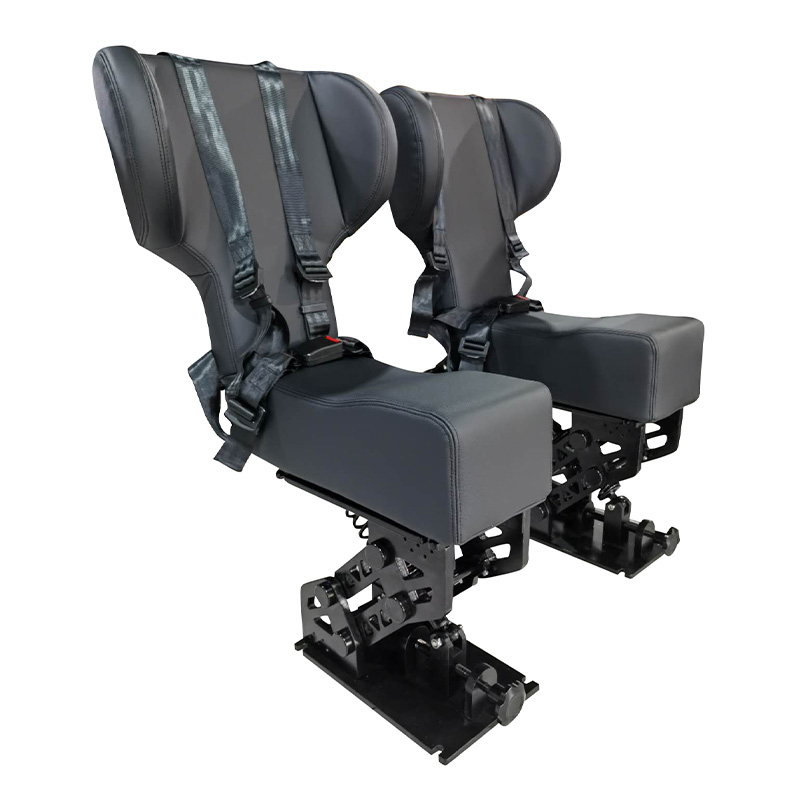
Critical Certifications and Standards in Marine Pilot Chairs
| Certification / Standard | Issuing Body / Region | Purpose | Key Requirements |
| SOLAS (Safety of Life at Sea) | International Maritime Organization (IMO) | Make sure equipment is safe on ships that go to sea | Fire resistance, structural integrity, ergonomic suitability |
| Wheelmark (Marine Equipment Directive 2014/90/EU) | European Union | Certifies marine equipment used on EU-flagged vessels. | Conformity to EU marine safety as well as performance standards |
| DNV Certification | DNV (Det Norske Veritas) | Tests the durability and safety of marine components | Structural load tests, corrosion resistance, material quality |
| ABS Certification | American Bureau of Shipping | Evaluates the safety and performance of ABS-classed equipment vessels. | Fatigue testing, vibration resistance, design compliance |
| Lloyd’s Register Approval | Lloyd’s Register | It confirms that the vessel is in compliance with international marine standards | Testing of materials, operational safety and fire safety |
| EN 1021 (Parts 1 & 2) | European Committee for Standardization (CEN) | Specificates the resistance to fire of furniture upholstered with a fire resistant fabric. | The resistance to smoldering cigarettes as well as open flames |
| ISO 5480 / ISO 7176 Series | International Organization for Standardization | Assuring ergonomic and mechanical performance of seating | Load testing, stability, ergonomics, durability |
| IMO FTP Code (Fire Test Procedures) | International Maritime Organization | The regulations govern fire testing of marine furniture and other materials | Smoke and non-flammability limitations the response of fire’s structural components |
| MED Type Approval | Notified Bodies (EU-recognized agencies) | Confirms conformity to EU Marine Equipment Directive | Tests on products and factory inspections, quality management conformity |
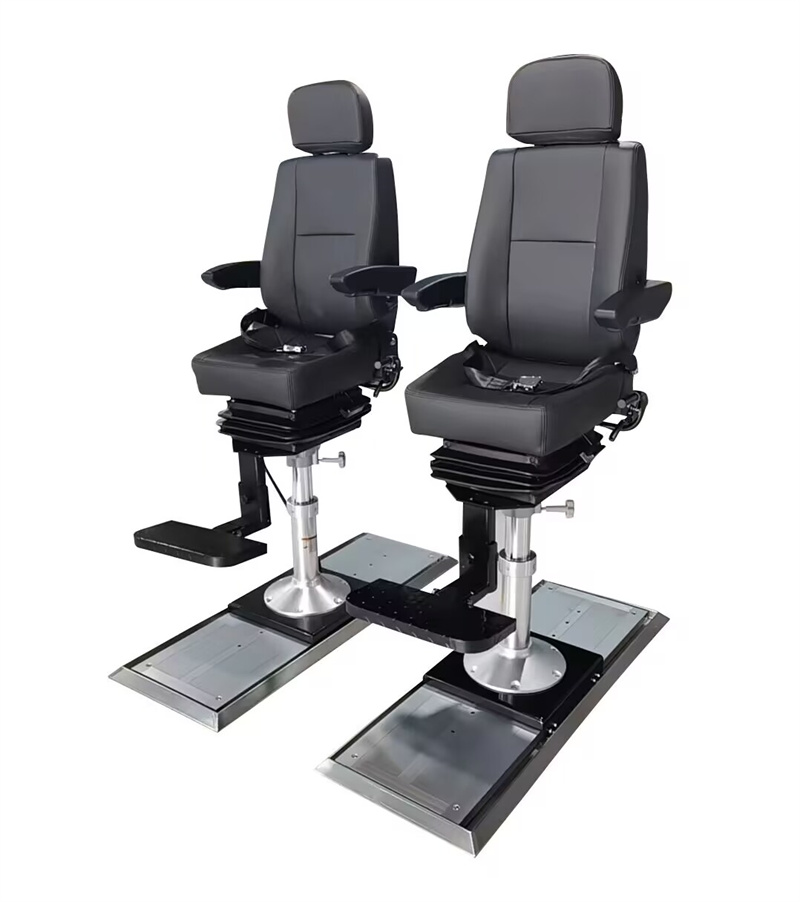
Specialized Applications of Safety Features in Marine Pilot Chairs
| Application Scenario | Relevant Safety Features | Purpose and Benefit |
| High-Seas Navigation on Cargo Ships | Frame reinforced with shock-absorbing material and fire-resistant upholstery | Reduces fatigue for the operator and guarantees stability and security in rough seas. |
| Tugboat and Harbor Maneuvering | 360deg swivel lock small design, slide track with stops that are secure | Improves the mobility and control of operators in dynamic docking environments |
| Patrol and Military Vessels | Integration of safety harnesses with vibration isolation, low-profile armrest controls | The device protects the user during high-speed movements and fast-response operation |
| Arctic and Cold Weather Operations | Seats heated made of insulated materials, parts that are resistant to corrosion | Assists in maintaining comfort for the operator and integrity of the chair in extreme cold temperatures |
| Offshore Oil & Gas Platforms | Anti-corrosive construction, flame-resistant upholstery ergonomic lumbar and head support | Provides safety for long-duration in dangerous offshore environments. |
| Ferries and Passenger Ships | Height adjustment in a snap Anti-slip seat material moveable locking mechanisms | It allows for a secure and comfortable position when navigating frequently |
| Luxury Yacht Navigation Stations | Controls for armrests, electronic adjustment using memory settings security locking system | Mixes luxury with the security of operation and the reliability |
| Bridge Simulators in Maritime Training | Motion-compatible mounts, ergonomically adjustable features | Preparing cadets for the real world while maintaining safety standards for training |
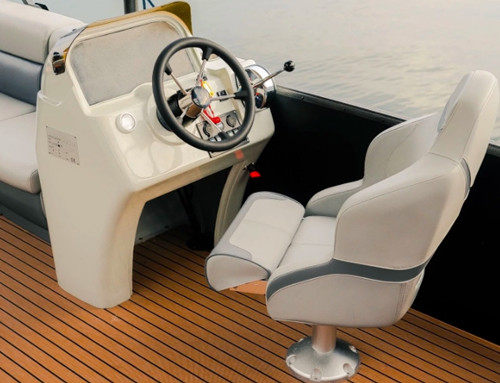
Emerging Technologies in Enhancing Safety Features of Marine Pilot Chairs
Innovative technologies are being incorporated into the designs of marine pilot chairs not only to improve the comfort of captains or helmsman, but also to greatly enhance safety, situational awareness and adaptability in unpredictable sea conditions..
1. Smart Sensors for Real-Time Monitoring
One of the biggest advancements in the field of marine pilot chair safety is the introduction in smart sensor technology. These sensors be used to monitor seat occupancy, posture level, vibration levels, as well as tilt angles in real-time. For example, accelerometers incorporated inside the base of the chair could detect extreme movement or impact, thereby alerting bridge workers or initiating a stability lock in order to stop any further motion. Advanced systems can also incorporate biometric sensors that monitor the user’s fatigue or stress levels, which may aid in preventing performance degradation in situations of high risk.
2. Automated Adjustment Systems
Technology like electronic actuators and memory settings have made adjustments to chairs easy and secure. Captain’s chairs can now be adjusted automatically to conform to the ergonomic preference of the user with the press of a button or after the detection of a user. These systems minimize the requirement for manual movements, which is an crucial safety aspect for those operating on rough waters, when even the smallest movements could cause danger. Automated tilt and height adjustments will also guarantee optimal line-of-sight visibility and access to controls which reduces the chance of navigational errors.
3. Integration with Vessel Control Systems
Contemporary helmsman chairs are becoming integral nodes within the ship’s control system. With digital interfaces and bus connections, operators are able to manage navigation equipment, communications systems and even light from the armrests in the chair. This reduces the need for moving and allows users to remain at a seated position and remain focused during critical activities. The enhanced integration also allows security interlocks such as removing chair functions during high-speed docking or transit.
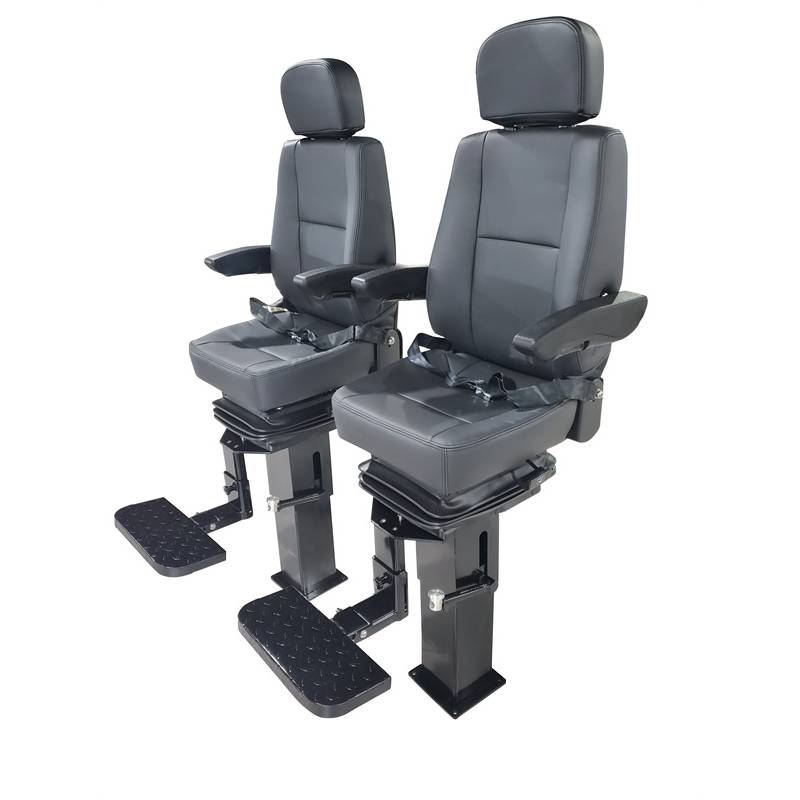
4. Advanced Shock and Motion Control Systems
Innovative damping techniques are being developed to minimize the impact and vibration more effectively than conventional shock absorbers. Magneticorheological (MR) fluid dampers, as an instance alter their viscosity in response to electrical current and vessel motion providing flexible cushioning that can respond instantly to the changing conditions of the sea. These systems offer superior comfort and ease of use. They also reduce the musculoskeletal strain on the operator and are essential to keeping alert throughout long shifts.
5. Fireproof and Anti-Microbial Materials
The emergence of new materials science is playing an important role in improvements to safety. Cushioning and upholstery are made from composites that are fire-resistant and exceed the traditional standards for flame resistance. In addition, anti-microbial coatings and self-cleaning surfaces are now being used especially in vessels that have areas for sharing, which reduces the chance of cross-contamination and increasing the safety of hygiene.
6. Augmented Reality (AR) Integration Support
While still in the initial stage, a few prototypes of pilot chairs are being developed to work with AR headsets and head-up display devices that offer overlays that allow navigation warnings about collisions, collisions, and warnings about weather. These systems will communicate with the chair and adjust its position or even gently vibrate to warn the user of any dangers without causing a panic or disorientation.
7. Predictive Maintenance Using IoT Connectivity
Chairs equipped with IoT modules can send data about their patterns of use and stress exposure and component wear to an automated maintenance system. Predictive analytics can then determine when a component might fail and recommend timely replacements, preventing safety issues before they arise and reducing downtime for essential equipment.
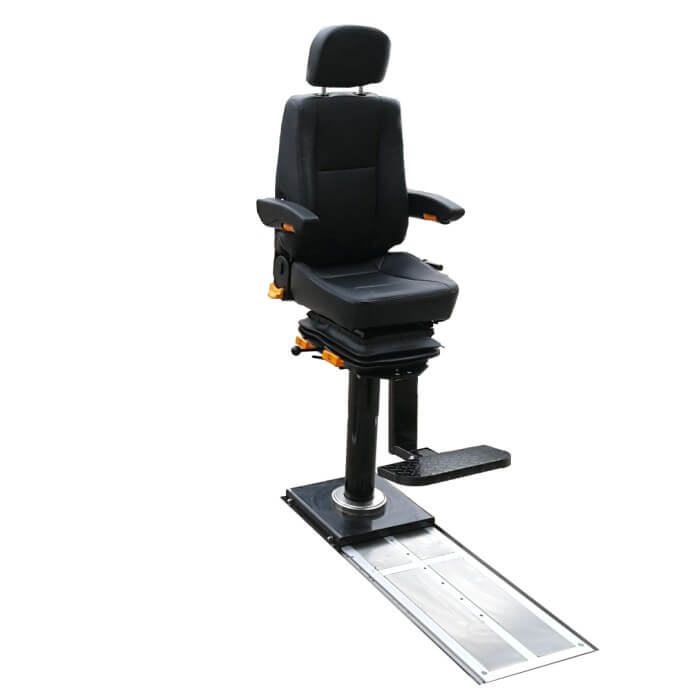
Final Thoughts
Marine pilot chairs aren’t simply seating arrangements and they are essential to vessel safety and operational efficiency. Equipped with safety features specifically designed and recognized to international standards for maritime safety, the marine captain’s chairs aid in maintaining the control and comfort in difficult conditions. When choosing pilot chairs for marine use, shipbuilders and operators should select products that show superior ergonomics and strict adherence to certified safety regulations, which not only ensures the safety of the crew members but also the smooth and secure navigation of the ship.
